To ask Unlimited Maths doubts download Doubtnut from https//googl/9WZjCW The derivative of `tan^(1) 2x/(1x^2)` with respect to `sin^(1) 2x/(1x^2)`, isAbout Press Copyright Contact us Creators Advertise Developers Terms Privacy Policy & Safety How works Test new features Press Copyright Contact us CreatorsPochodna 2*sec(x)^2*tan(x) po x = 4*sec(x)^2*tan(x)^22*sec(x)^4 Pokaż rozwiązanie "krok po kroku" Rysuj Edytuj Bezpośredni link Wartość na x= Kalkulator pochodnych oblicza pochodną funkcji w odniesieniu do danej zmiennej za pomocą analizy zróżnicowania Obsługiwane są pochodne do 10 stopnia
How To Calculate The Derivative Of Sec 2 X Quora
2 sec^2x tan x derivative
2 sec^2x tan x derivative-Find the Derivative d/dx y=2sec(x)tan(x) Since is constant with respect to , the derivative of with respect to is Differentiate using the Product Rule which states that is where and The derivative of with respect to is Multiply by by adding the exponents$\endgroup$ – Simon S Nov 1 '14 at 2253 2 $\begingroup$ It's important to look into the problem thoroughly before coming here


What Is The Integral Of Tanx Sec 2x E Tanx Quora
For more cool math videos visit my site at mathgotservedcom or http//youtubecom/mathsgotservedWhat Is The Greatest Common Factor Of 4k, 18k4, And 12? · We know that, (1) d dx (secx) = secxtanx (2) d dx (tanx) = sec2x Here, y = sec2x tan2x Diffwrt x , using Chain Rule dy dx = 2secx d dx (secx) 2tanx d dx (tanx) ∴ dy dx = 2secx ⋅ secxtanx 2tanx ⋅ sec2x ∴ dy dx = 2sec2xtanx 2sec2xtanx
2909 · Using the product rule, the derivative of tan^2x is 2tan(x)sec 2 (x) Finding the derivative of tan^2x using the chain rule The chain rule is useful for finding the derivative of a function which could have been differentiated had it been in x, but it is in the form of another expression which could also be differentiated if it stood on its own · Secant is the reciprocal of the cosine The secant of an angle designated by a variable x is notated as sec(x) The derivative rule for sec(x) is given as d ⁄ dx sec(x) = tan(x)sec(x) This derivative rule gives us the ability to quickly and directly differentiate sec(x)Liczba wierszy 7 · 0210 · Using the product rule, the derivative of sec^2x is 2sec^2(x)tan(x) Finding the
· If the derivative of a is b, then the integral of b is a C, where C is a constant This tells us that to check our work, we can take the integral of 2sec 2 x tan x, and we should get sec 2 xThe differentiation of trigonometric functions is the mathematical process of finding the derivative of a trigonometric function, or its rate of change with respect to a variableFor example, the derivative of the sine function is written sin′(a) = cos(a), meaning that the rate of change of sin(x) at a particular angle x = a is given by the cosine of that angle0909 · Using the product rule, the derivative of sin^2x is 2sin(x)cos(x) Finding the derivative of sin^2x using the chain rule The chain rule is useful for finding the derivative of a function which could have been differentiated had it been in x, but it is in the form of another expression which could also be differentiated if it stood on its own



Second Derivative Of Tan 2x Youtube


Derivatives Of Trigonometric Functions
· How to Take the Derivative of Tan x You can take the derivative of tan x using the quotient rule That's because of a basic trig identity, which is a quotient of the sine function and cosine function tan(x) = sin(x) / cos(x) Step 1 Name the numerator (top term) in the quotient g(x) and the denominator (bottom term) h(x)1311 · From above, we found that the first derivative of sec(2x) = 2sec(2x)tan(2x) So to find theSolve your math problems using our free math solver with stepbystep solutions Our math solver supports basic math, prealgebra, algebra, trigonometry, calculus and more



Misc 18 Find Derivative Sec X 1 Sec X 1 Cbse Miscellaneou



How To Take The Derivative Of Tan X Video Lesson Transcript Study Com
By signing up, you'll get thousands of stepbystep solutions to your homework questions You canProve that the derivative of tan (x) is sec^2 (x) Let y = tan (x) Recall the definition of tan (x) as sin (x)/cos (x) Therefore y = sin (x)/cos (x) Use the quotient rule, which states that for y = f (x)/g (x), dy/dx = (f' (x)g (x) f (x)g' (x))/g 2 (x) with f (x) = sin (x) and g (x) = cos (x) · (tan x)' = sec^2 x Let f(x) = tanx We know that tanx = sinx/ cosx ==> f(x) = sinx/ cosx Now to differenctiate f(x) we will use the chain rule f(x) = u/v such that u= sinx ==> u' = cosx



Derivative Proofs D Dx Tan X Sec 2 X Youtube



The Derivative Of H X 2 Sec 2 X Tan X Product Rule Example Youtube
Find the 2nd Derivative y=tan(x) The derivative of with respect to is Find the second derivative Tap for more steps Differentiate using the chain rule, which states that is where and Tap for more steps To apply the Chain Rule, set as Differentiate using the · Example 17 Compute the derivative tan x Let f (x) = tan x We need to find f' (x) We know that f' (x) = lim┬ (ℎ→0) f〖 (𝑥 ℎ) − f (x)〗/ℎ Here, f (x) = tan x f (x ℎ) = tan (x ℎ) Putting values f' (x) = lim┬ (ℎ→0) tan〖 (𝑥 ℎ) −tan𝑥 〗/ℎ = lim┬ (ℎ→0) 1/ℎ ( tan (x h) – tan x) = lim┬ (ℎ→0) 1/ℎ (sin (𝑥 ℎ)/cos (𝑥 ℎ) − · Therefore, it is natural for $\sec^2(x)$ to be the derivative of $\tan(x)$ The same technique will work for $\sin(x), \cos(x)$, and many others If you are uncomfortable with the algebra then it is best draw a function and its derivative on graph paper



Integral Of Sec 2 X Tan 2 X 3tan X 2 Dx Youtube



Differentiate The Following From First Principle Tan 2x
Vahin8411 Vahin8411 Math Secondary School How do find the derivative of y=(sec)2x(tan)2x?For those with a technical background, the following section explains how the Derivative Calculator works First, a parser analyzes the mathematical function It transforms it into a form that is better understandable by a computer, namely a tree (see figure below) In doing this, the Derivative Calculator has to respect the order of operations A specialty in mathematical expressions is that the multiplication sign can be left out sometimes, for example we write "5x" instead of "5*x"Compute answers using Wolfram's breakthrough technology & knowledgebase, relied on by millions of students & professionals For math, science, nutrition, history


What Is The Derivative Of Tan 1 Sec X Tan X Quora



Derivative Of Tan X Sec X Tan X More
· The derivative of sec2 (x) is 2sec2 (x) tan (x) The chain rule states that the derivative of f(g(x)) is equal to f ' (g(x)) ⋅ g ' (x)0211 · We can use the chain rule to find the derivative of 2sec 2 (2x) (bearing in mind that the derivative of sec^2(x) is 2sec 2 (x)tan(x)) and it gives us a result of 8sec 2 (2x)tan(2x) The second derivative of tan(2x) is 8sec 2 (2x)tan(2x)Derivative Calculator Derivative of 2*sec (x)^2*tan (x) by x = 4*sec (x)^2*tan (x)^22*sec (x)^4 Show a step by step solution Draw graph Edit expression Direct link to this page Value at x=
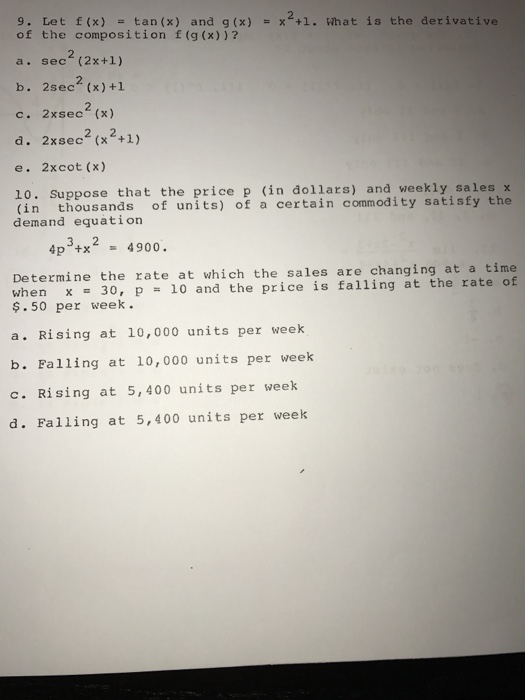


Solved Let F X Tan X And G X X 2 1 What Is T Chegg Com


C4 Help Integrate 2sec 2xtanx The Student Room
This calculus video tutorial shows you how to find the derivatives if inverse trigonometric functions such as inverse sin^1 2x, tan^1 (x/2) cos^1 (x^2) ta2 4 2k 4k Don't Miss In simple interest what sum amounts of Rs11/in 4 years and Rs10/in 5 years ?2503 · The derivative of tan(2x) is equal to two times the secant squared of two times x Using mathematical notation, the equation is written as d/dx tan(2x) = 2sec^2(2x) The derivative of tan(2x) can be found by using the quotient rule and the chain rule
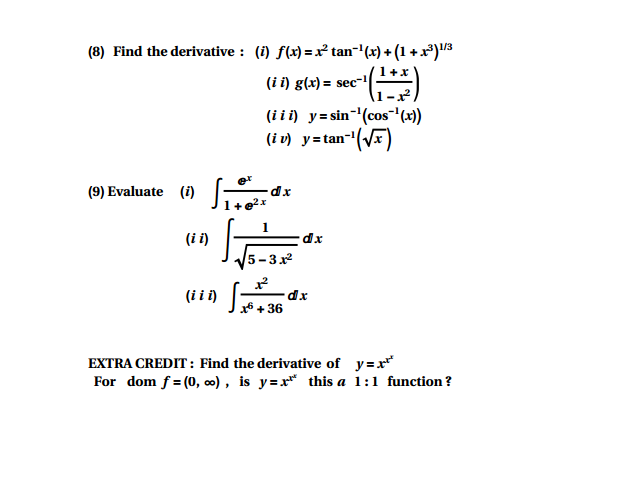


Solved Find The Derivative I F X X 2 Tan 1 X 1 Chegg Com


How To Prove D Dx Tanx Sec 2x Without Using Tanx Sinx Cosx And Instead Use Tan X H Tanx Tanh 1 Tanxtanh Quora
First Method y = cot^1(secxtanx) dy/dx = 1/{1(secxtanx)^2} d/dx(secxtanx) dy/dx = 1/{1sec^2xtan^2x2secxtanx}(secxtanxsec^2x)Get an answer for 'Prove that the derivative of tan x is sec^2 x' and find homework help for other Math questions at eNotes$\begingroup$ What's the derivative of $\tan x$?



The Derivative Of Sec 2 X With Respect To Tan 2 X Is
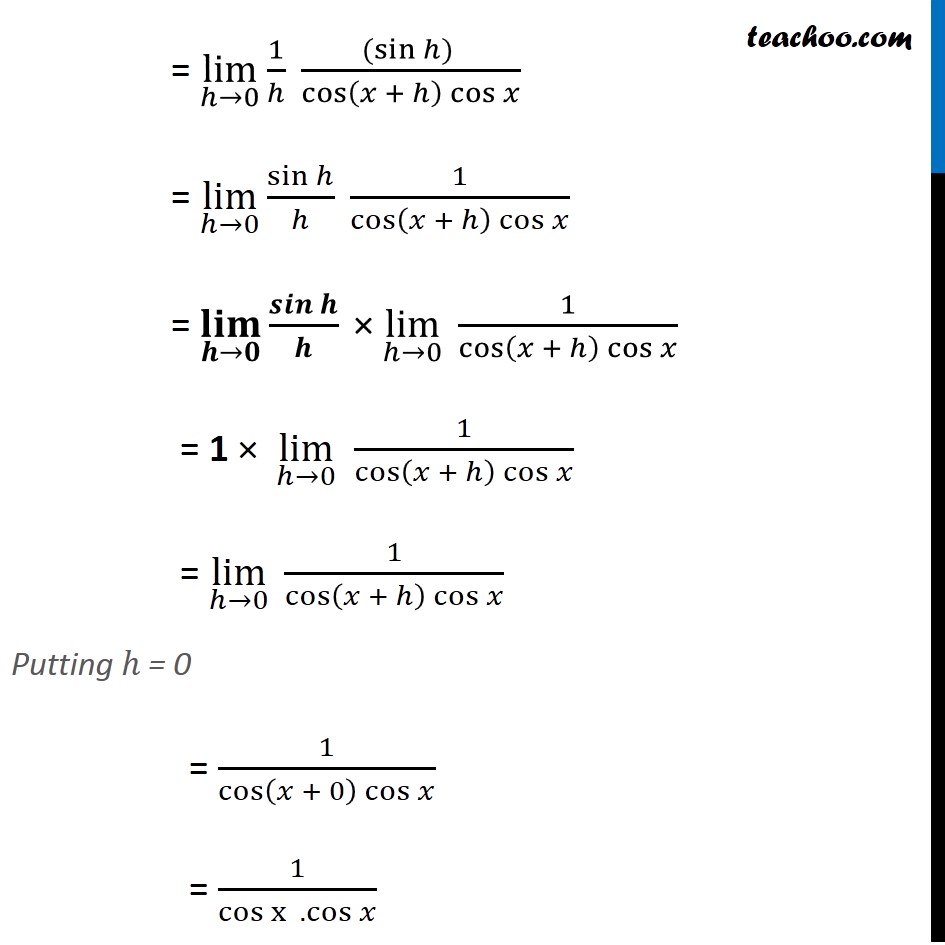


Prove That Derivative Of Tan X Is Sec 2 X By First Principle
1 See answer Vahin8411 is waiting for your help Add your answer and earn pointsDerivative of sec^2x) full pad » x^2 x^ {\msquare} \log_ {\msquare} \sqrt {\square} \nthroot \msquare {\square} \le \ge · The derivative of the function secant squared of x is d/dx(sec^2(x)) = 2sec^2(x)tan(x) This derivative is obtained by applying the chain rule of differentiation and simplifying the result Sec^2(x) is a composite function that can be rewritten as (sec(x))^2



Derivative Of Tan X Old Video Khan Academy
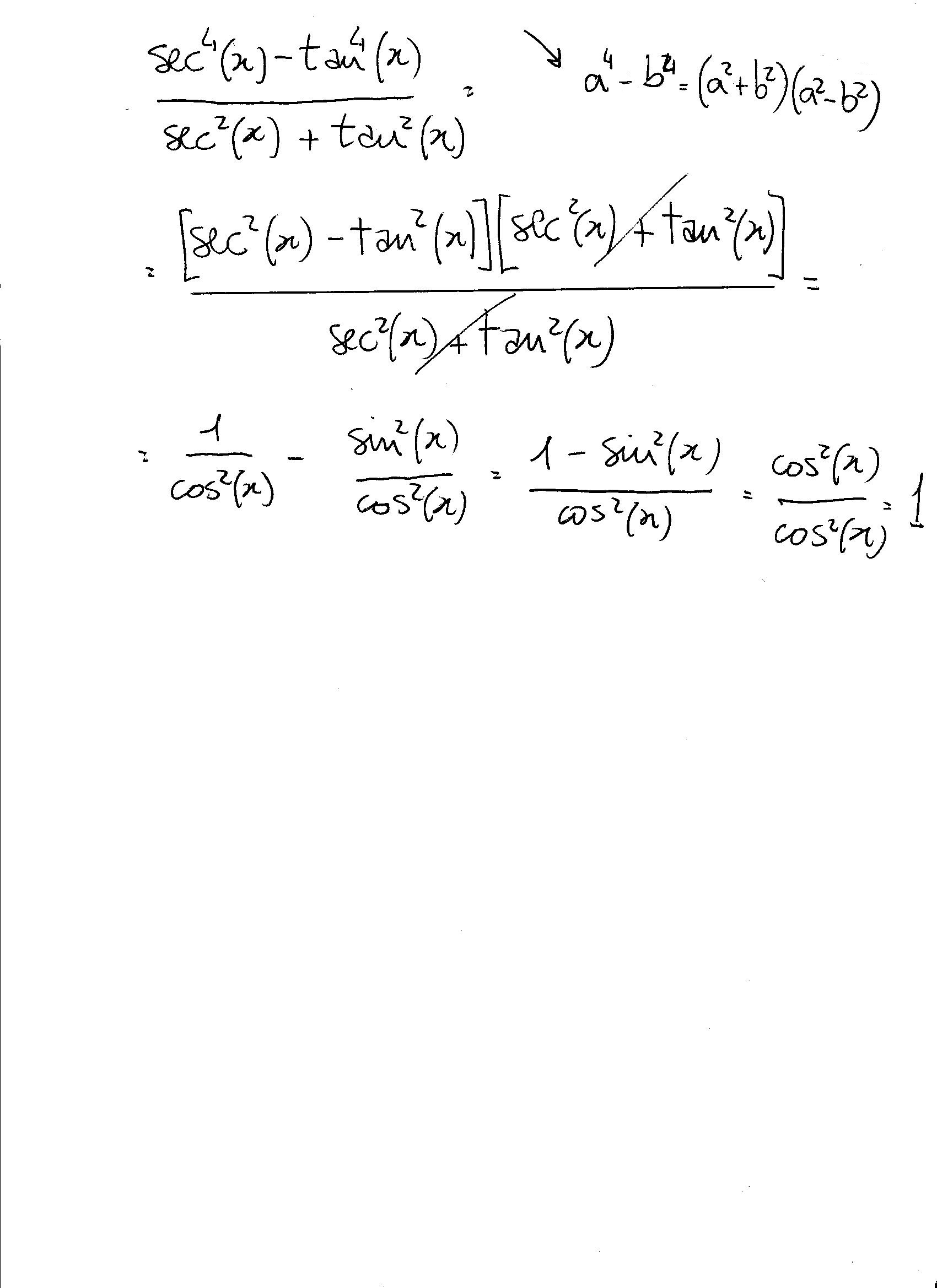


How Do You Simplify Sec 4x Tan 4x Sec 2x Tan 2x Socratic
· From sin 2 x cos 2 x =1, dividing by cos 2 x gives tan 2 x 1 = sec 2 x Thus, another form for the final solution can be written as For the first example, we could writeGet the answers you need, now!Compute answers using Wolfram's breakthrough technology & knowledgebase, relied on by millions of students & professionals For math, science, nutrition, history



Derivative Of Tan X Old Video Khan Academy



Integral Of Sec 2 X Sqrt 1 Tan 2 X Using The Arcsine Function Youtube
How do find the derivative of y=(sec)2x(tan)2x?Answer to What is the derivative of tan^2(x)? · If units of degrees are intended, the degree sign must be explicitly shown (eg, sin x°, cos x°, etc) Using this standard notation, the argument x for the trigonometric functions satisfies the relationship x = (180x/π)°, so that, for example, sin π = sin 180° when we take x = π In this way, the degree symbol can be regarded as a


10 4 Integration Of Powers Of Trigonometric Functions


What Is The Integral Of Tanx Sec 2x E Tanx Quora
· Explanation note tan2x = (tanx)2 differentiate using the chain rule given y = f (g(x)) then dy dx = f '(g(x)) × g'(x) ← chain rule y = (tanx)2 ⇒ dy dx = 2tanx × d dx (tanx) ⇒ dy dx = 2tanxsec2x Answer linkDerivative Proofs d/dx tan (x)=sec^2 (x) Watch later Share Copy link Info Shopping Tap to unmute If playback doesn't begin shortly, try restarting your device Up next in 8 · i think your derivative (with brackets) is ok since $\tan(x)$ has a derivative thus $\tan(x)\tan(x)=\tan(x)^2$ has also a derivative and is given by $2\cdot(1\tan(x)^2)(\tan(x))$ (in the range of definition) a comment before the downvoting is starting $$\tan(x)'=\frac{1}{\cos(x)^2}=\frac{\sin(x)^2\cos(x)^2}{\cos(x)^2}=1\tan(x)^2$$



The Integral Int Sec 2x Secx Tanx 9 2 Dx Equals For Some



Derivative Quiz Ebook
Compute answers using Wolfram's breakthrough technology & knowledgebase, relied on by millions of students & professionals For math, science, nutrition, history0510 · x = 2^p, y = 2^q Express 2^p^q in terms of x and/or y please solve this question Find the sum of all natural numbers between 100 and 500 which are divisible by 8



Solved Find The Derivative Y 6 Sec X 6 Secx 2 Sec2 X Chegg Com
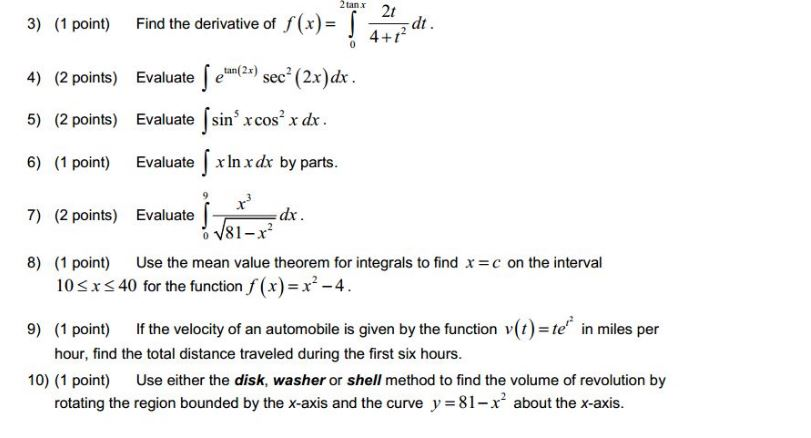


Solved Find The Derivative Of F X Integral 2tan X 0 2t Chegg Com



How Do You Calculate Derivative Of Sec 2 X The Student Room



The Derivative Of Sec 2x Derivativeit


How To Calculate The Derivative Of Sec 2 X Quora



Leslie Ruo S Blog Rusty Calculus
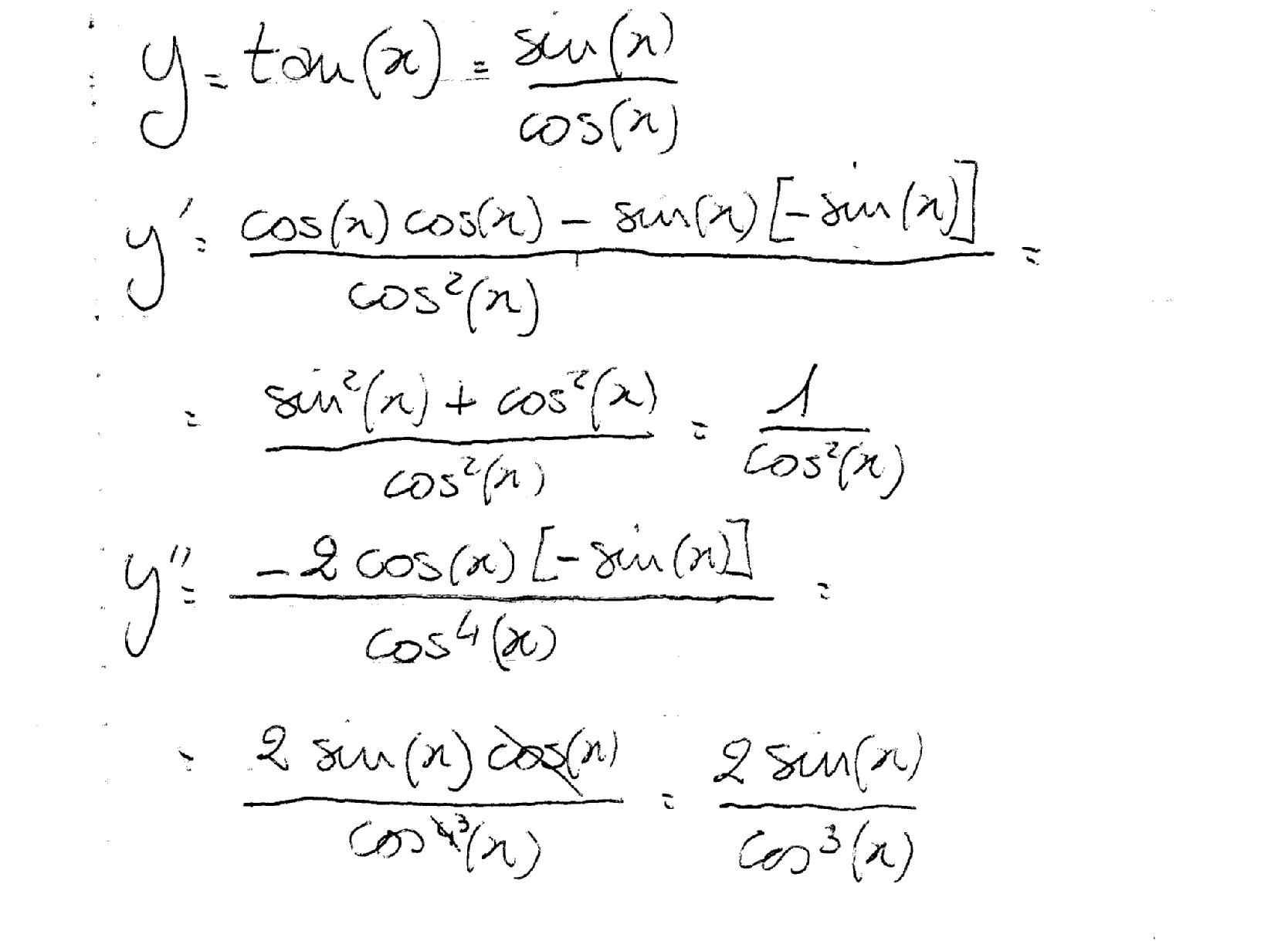


What Is The 2nd Derivative Of Y Tanx Socratic


How To Prove That The Derivative Of Tan X Is Sec 2 X Quora
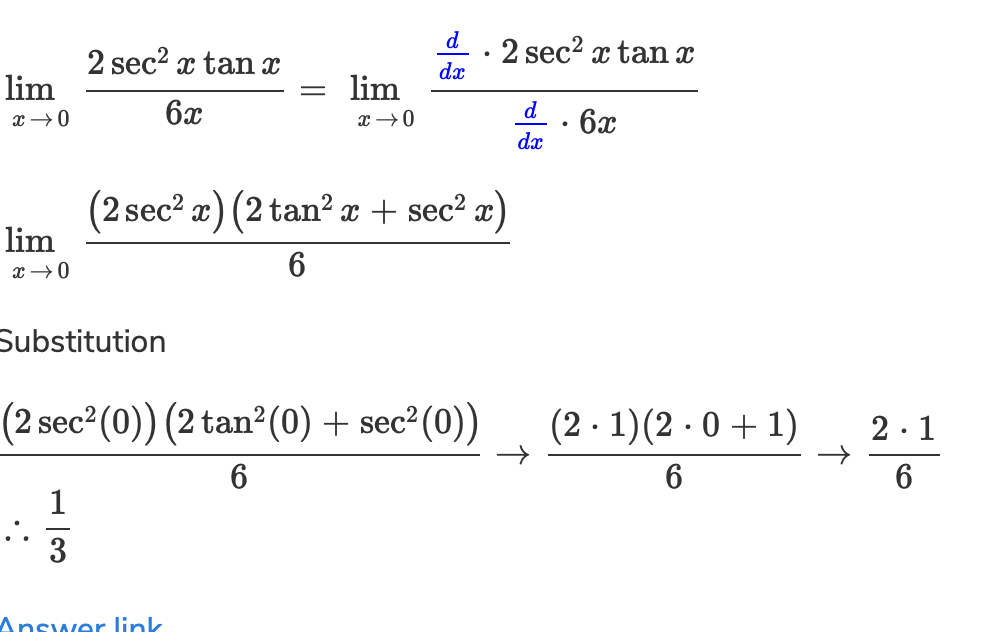


Solved I Just Need An Explanation Of How He Found The Der Chegg Com


How To Prove That The Derivative Of Tan X Is Sec 2 X Quora



Finding The Derivative Of Sec 2 X Video Lesson Transcript Study Com



Iit 1994 Prove That Sec2x Tan2x Tan Pi 4 X When X Lies Between 0 And Pi 4 Youtube



Ap Calculus Proof That Derivative Of Tanx Is Sec 2 X Free Response Tan X Differentiate Youtube


If 2sec2x Tana Cota Then What Is The Value Of A X Quora



What Is The Derivative Of Sec 2 Tan 1 X With Respect



How To Calculate The Derivative Of Sec 2 X Quora



Solved I Differentiate Tan X 1 Y 1 Cos X 2 Y Tan Chegg Com



The Derivative Of Tan X Is Sec 2 X Why Mathematics Stack Exchange



Find The Derivative Of The Given Function Y Tan 2x 1 Cot 2x I Tried Converting The Original Function In Terms Of Sin And Cos But It Was Still Too Complicated To Be Called Simplified



Integration Of Sec 2x Tanx Brainly In



The Derivative Of Sec 2x Derivativeit



Worked Example Derivative Of Sec 3p 2 X Using The Chain Rule Video Khan Academy
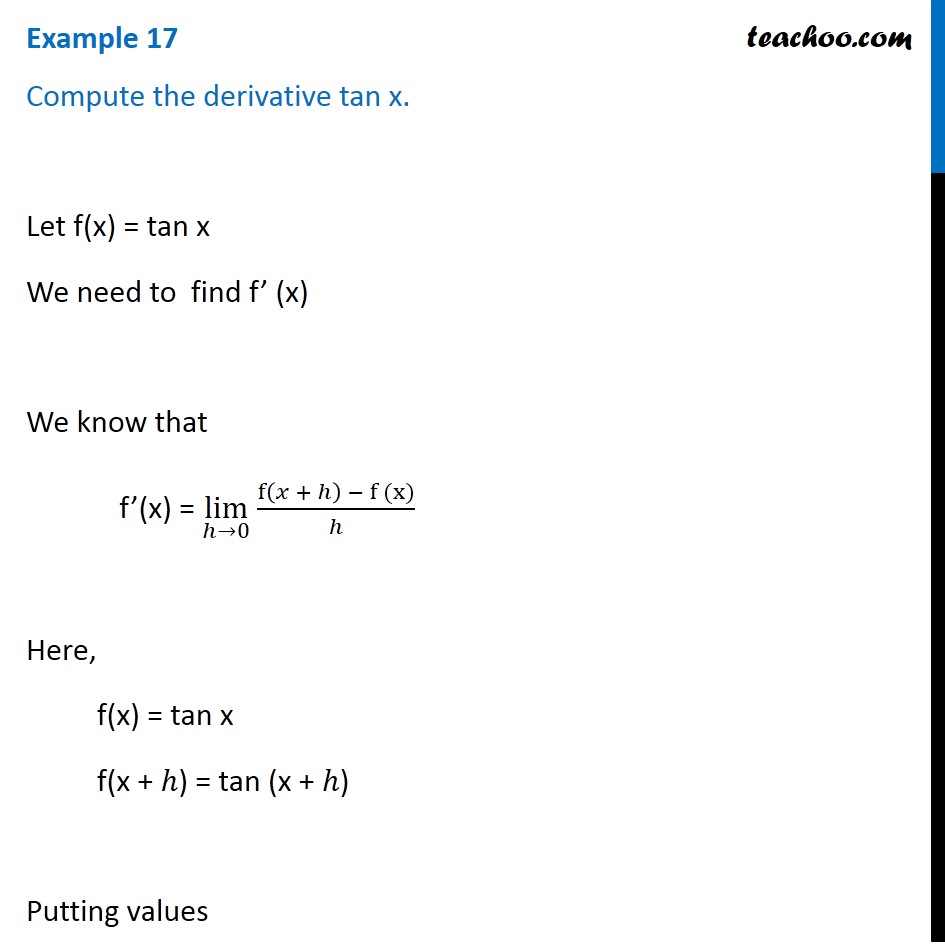


Prove That Derivative Of Tan X Is Sec 2 X By First Principle


How To Prove That The Derivative Of Tan X Is Sec 2 X Quora
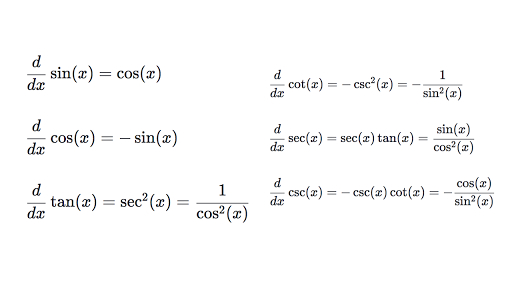


Differentiating Trigonometric Functions Review Article Khan Academy



Tan 2x 1 Sec 2x Tan X



Solved Compute The Derivative Of The Function F X Tan Chegg Com



Integral Of Tan X Sec 2 X Two Results Off By A Constant Youtube



How To Integrate 2x Sec 3 X 2 3 Tan X 2 3 Quora



If Inte Secx Secxtanxf X Secxtanx Tan 2 X Dx E Secx F X C
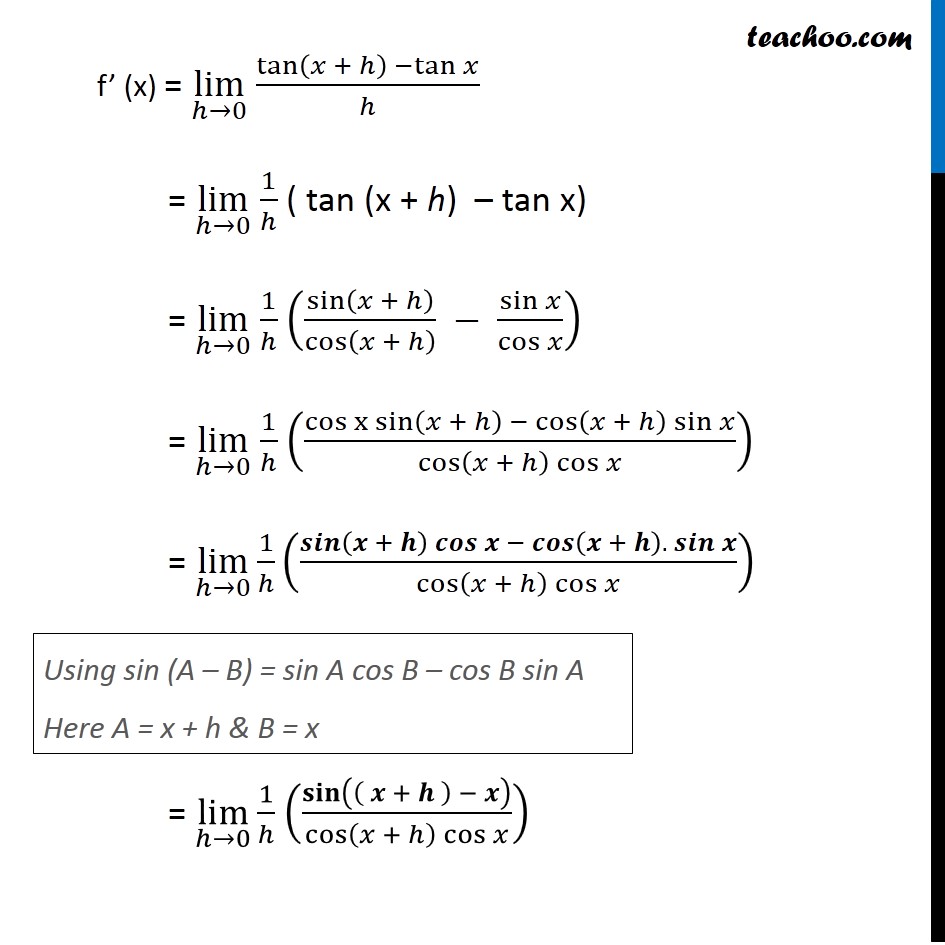


Prove That Derivative Of Tan X Is Sec 2 X By First Principle



Solved 18 Evaluate The Simplified Derivative Of The Func Chegg Com



Evaluate Inte X Tanx Sec 2x Dx



Derivative Of Tan X Sec X Tan X More



Integrate 2sec 2x Tanx



Finding The Derivative Of Sec 2 X Video Lesson Transcript Study Com



Solved Find The Derivative Of The Following Function F X Chegg Com



Solved Find The Derivative Of F X Est Sec 2x Oaf X Chegg Com



How To Take The Derivative Of Tan X Video Lesson Transcript Study Com



How To Calculate The Derivative Of Sec 2 X Quora



Solve Diff Equation Dy Dx Y Sec 2 X Tan X Sec 2x Brainly In



Answered Find The Indefinite Integral Sec 2x Bartleby



Tan 2x 2tanx 5dy Dx 2 1 Tanx Sec 2x Differential Equations Brainly In
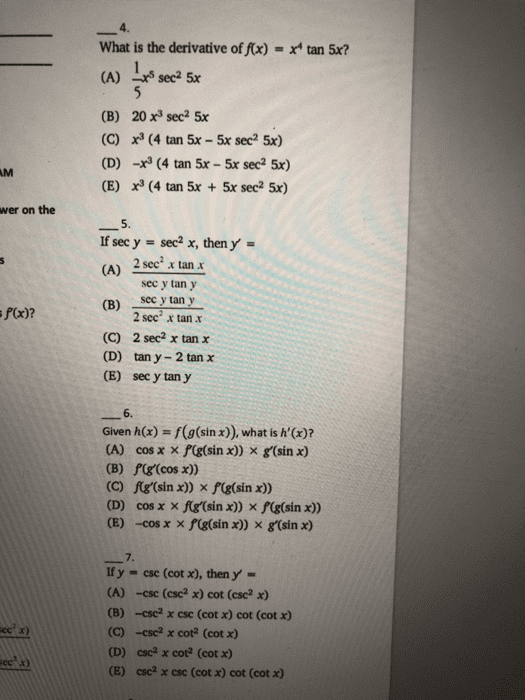


Oneclass 4 What Is The Derivative Of Fx A Se 5x Tan 5x B X3 Sec2 5x C X3 4 Tan 5


What Is The Differentiation Of Sec Inverse Tan 2x Quora



Example 22 Find Derivative Of Tan 2x 3 Chapter 5 Class 12



Finding The Derivative Of Sec 2 X Video Lesson Transcript Study Com



If Sec 2x Tanx Tan 2x Tan 2x Sec 2x Tanx Tanx Tan



Ex 7 3 15 Integrate Tan3 2x Sec 2x Class 12 Ncert Ex 7 3
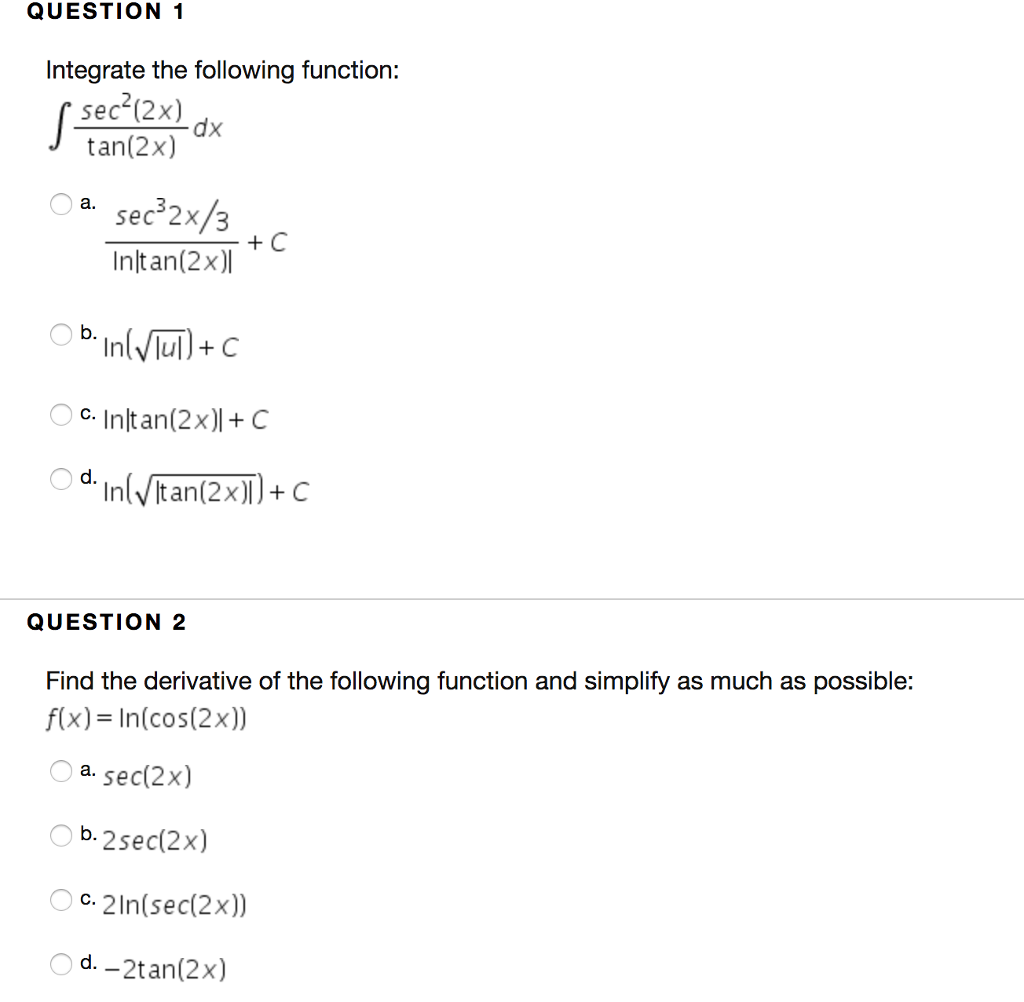


Solved Question 1 Integrate The Following Function Sec Chegg Com


Is Tanx 2 2tanx 1 5tanx Sec X Quora



Ex 9 4 4 Find General Solution Sec2 X Tan Y Dx Sec2y



Integration Calculus 2



Derivative Of Tan X Sec X Tan X More



A Levels Further Maths Leibnitz S Theorem I Can T Figure Out The Proof For F X 2 Sec 2 X Tan X Where F X Tan X Using Leibnitz S Theorem Can Someone Please Explain Why The Derivitive



Evaluate Int 3tan 2x 2 Sec 2x Tan 3x 2tanx 5 Dx



Limit Trigonometric Function 2 Sec 2x 1 Tan X Youtube
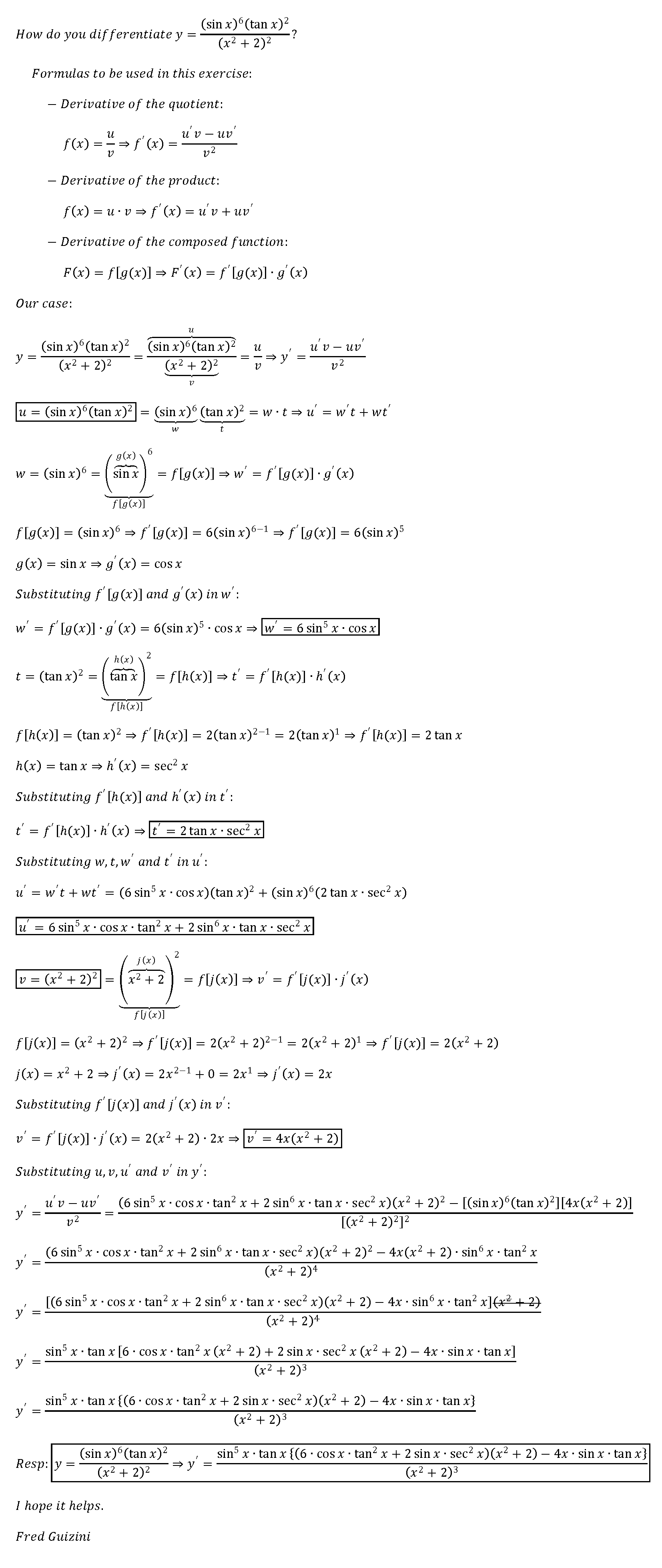


How Do You Differentiate Y Sin X 6 Tan X 2 X 2 2 2 Socratic



F 2tanx 1 Tan 2x Cos2x 1 Sec 2x 2tanx 2



Y Sec 2 X Tan 2 X Find The Derivative Of The Function Youtube



Answered If F Z Sec X Tan X Then F X Bartleby



Sec 6x Tan 6x 1 2 Tan 2x Sec 2x Important Difficult Trigonometric Identity Youtube



Ex 7 4 9 Integrate Sec 2 X Root Tan 2 X 4 Ncert Class 12


How To Prove D Dx Tanx Sec 2x Without Using Tanx Sinx Cosx And Instead Use Tan X H Tanx Tanh 1 Tanxtanh Quora



Trig Identity Sec 4x Tan 4x 1 2tan 2x Youtube



Integrate Sec 2x Method 2



Sec2x 2 Tanx 1 Where Lim X Tends To Pi 4 Maths Limits And Derivatives Meritnation Com


What Is The Second Derivative Of Tanx Secx Quora
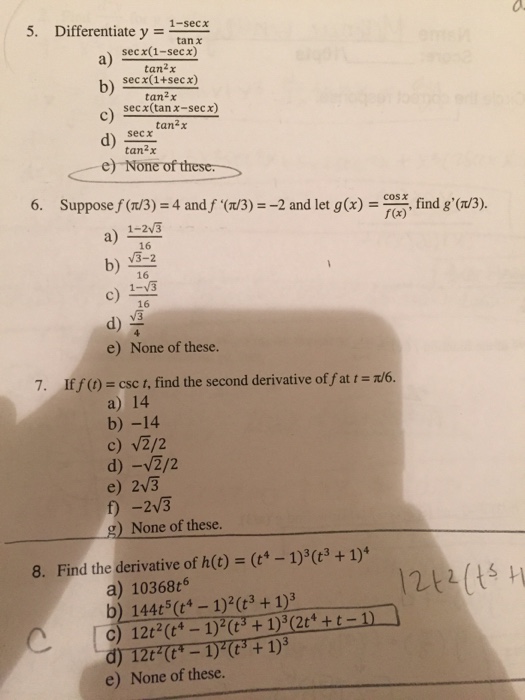


Solved Differentiate Y 1 Sec X Tan X Sec X 1 Sec X Ta Chegg Com



Integration Of Tan 2 X Sec 2 X Youtube



Solved Find The Derivative Of F X 6 Sec 2x F X x Chegg Com


Bestmaths Online Proof 4



Brandi S Buzzar Blog Proof Derivative Tan X Sec 2 X



Proof Derivative Of Tanx Sec 2x Youtube



Solved Question 4 Find The Derivative Of F X 2x Sec2x Chegg Com
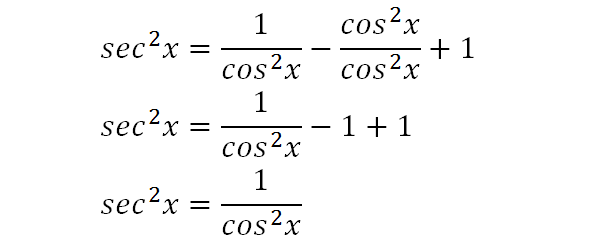


Integrate Sec 2x Method 2



0 件のコメント:
コメントを投稿